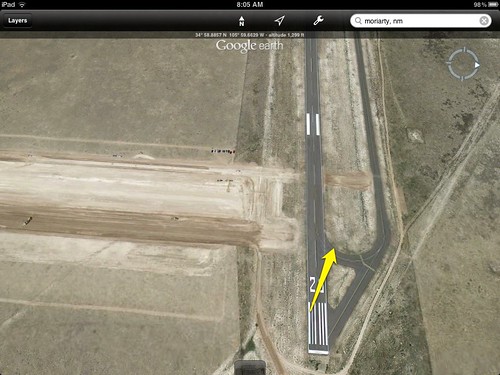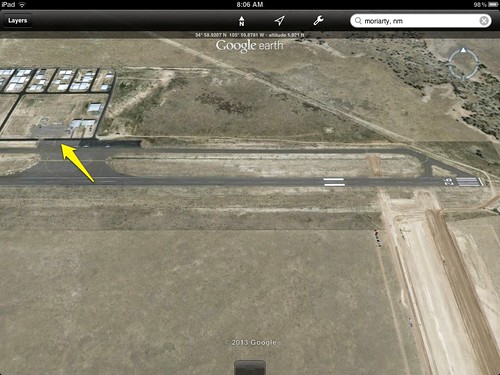Challenged
Pattern Altitude
If you have a strong crosswind, do you think it's wise to land off of center, in order to give yourself more room in case you're pushed to the side during the flare?
No. Centerline always as much as possible. As 'Dog points out, many GA runways are very narrow so even if your home airport has say, 150' wide runways, strive for the centerline. You'll appreciate doing so someday.
WTF are you doing agreeing with me?! You’ll tarnish my reputation even more than I have already.

I been drinking at the local Thai restaurant...
How will you determine, in advance, what errors you're going to make in the flare so you'll know if you should offset upwind or downwind from the centerline?
If you fail to keep your alignment (rudder) the aircraft will be 'crabbed' into the wind at touchdown and the wheels will take you toward the upwind side of the runway (into the crosswind) so you'll need to plan your touchdown on the downwind side of the centerline.
If, instead, your mistake will be failing to correct your drift (ailerons) you'll end up touching down downwind from your (left/right) aim point so you'll want to plan to touchdown on the upwind side of the centerline.
Heck, just land on the ramp. It’s tough to taxi in a high crosswind anyway.I can’t get a clear mental image of the crosswind wanting to blow the plane downwind across the runway after touchdown. Seems like the friction of the tires on the runway would make that an unlikely proposition.
I think I’ve more often seen a gusty crosswind weathervane the plane after touchdown and point it into the wind. Hence making it more likely to swerve and leave the runway from the upwind edge.
I can’t get a clear mental image of the crosswind wanting to blow the plane downwind across the runway after touchdown. Seems like the friction of the tires on the runway would make that an unlikely proposition.
That would be exceptionally difficult if not impossible...WTF are you doing agreeing with me?! You’ll tarnish my reputation even more than I have already.
That would be exceptionally difficult if not impossible...


I like this concept...Strong right crosswind. I landed roughly like this:
About :50 in is an example of the angling final I’ll use on occasion:
That makes sense. I was going to say that the one airplane that I’ve flown that you’d want to consider landing upwind in a strong crosswind is an Ercoupe which also lands in a crab.T-38 x-wind procedures call for purposefully landing on the upwind side of the runway (for us that is considered anything greater than 15kt x-wind component). Landing on centerline is not a religion all flying communities adhere to. There is value in landing upwind in certain applications. The T-38, along with many century series, and even some modern fighters, can't be landed wing-low. They have to touchdown in a crab. That means that you will skid and weather-vane by design until slow enough for tire friction from nosewheel to aid in directional control.
In theory, if you're skidding in a GA plane on touchdown w/ full control deflection you have exceeded the demonstrated x-wind component. But you know what they say, any landing you walk away with.....
Same is true with crosswind takeoff. You line up on the upwind side and hope you get into the air before you get pushed off the downwind side.
Well then you have nothing to worry about since you don’t even have a reputation.Hey now, who asked you? But at least I don’t have you agreeing with me. That would be more than anyone’s reputation could withstand.
Lining up on the downwind corner angling into the wind is exactly what I do in tailwheels.Interestingly, I would line up with the downwind corner and take off angling into the wind.
I remember doing that at Henrietta, OK (with tumbleweed blowing across the runway!) and at Sedona, AZ. It really does make a difference.
Interestingly, I would line up with the downwind corner and take off angling into the wind.
I remember doing that at Henrietta, OK (with tumbleweed blowing across the runway!) and at Sedona, AZ. It really does make a difference.
The part you are missing is that with the technique Fast Eddie is describing, you aren’t tracking in a straight line. It’s a curve. You start out pointing maybe 20 degrees or more off runway heading where you need it the most (low speed/less rudder effectiveness). As you pick up speed, you reduce the x-wind heading correction and begin to track centerline. If done right, you start out on the downwind corner, pointed at the upwind runway edge, but never actually get past centerline. It most definitely helps if you have to takeoff in a tailwheel in a strong x-wind.It really only makes a difference if your anticipated take-off run is so short that you can take-off 30-45° off of runway alignment. Most of the time your likely to get 10° or less, meaning that the resultant crosswind component is negligible.
